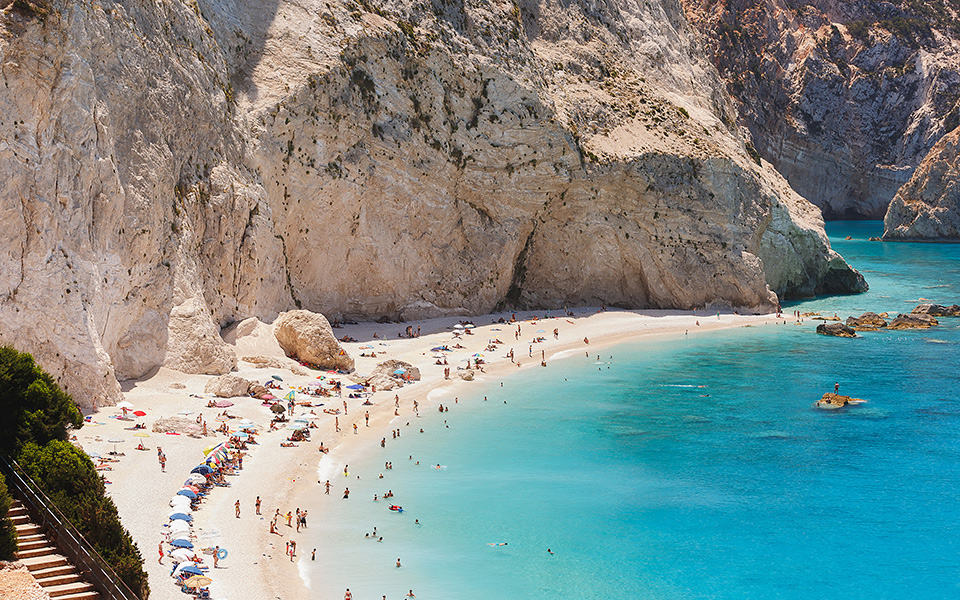How safe for visitors are the 14 most popular beaches on the Ionian islands? A team of scientists from the University of Athens have completed a three-year study on the steep coasts of the islands’ most iconic beaches, renowned for their eye-catching relief. The researchers have concluded that the famous Shipwreck Beach on Zakynthos should remain closed to visitors, while restrictions should be placed on access to Porto Katsiki and Egremni on Lefkada, Kalamaki on Zakynthos, and Gidaki on Ithaca.
The research on the geological situation on the popular Ionian coast was carried out by a team of specialists from the Department of Geology and Geoenvironment at the University of Athens, led by Dr. Efthimis Lekkas. The study was carried out on behalf of the Ionian Islands Region through the operational program “Laertes.” Specifically, the research program conducted studies on the beaches of Palaiochori and Glyfada on Crete, Egremni, Porto Katsiki and Pefkouli on Lefkada, Shipwreck Beach, Kalamaki, Dafni, Gerakas and Mizithres on Zakynthos, Gidaki on Ithaki, and Myrtos, Xi, Platia Ammos and Petani on Kefalonia.
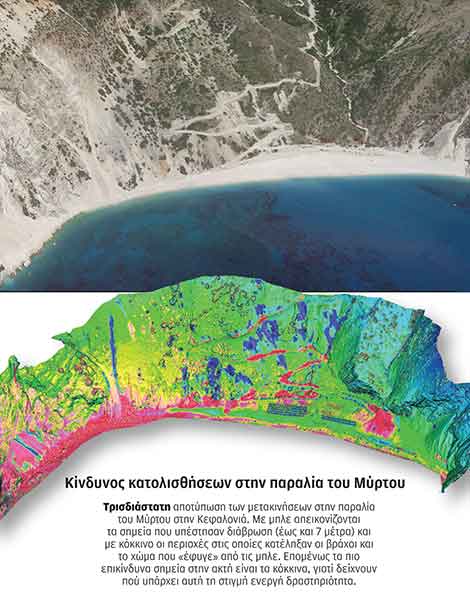
© University of Athens
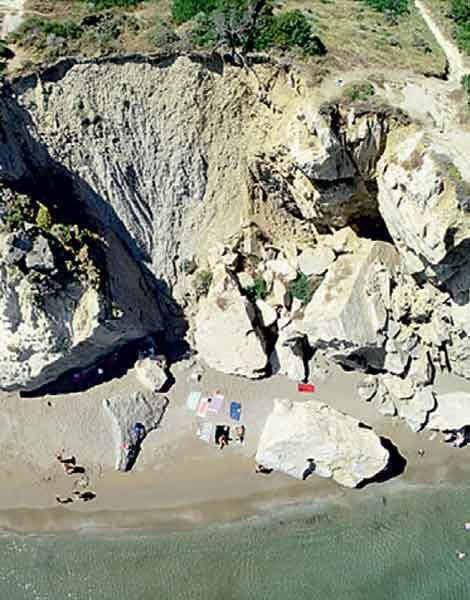
© University of Athens
Manolis Vassilakis, director of Athens University’s Remote Sensing Laboratory, was in charge of the team that carried out the three-dimensional mapping of the slopes. “We used drones and laser scanners in order to capture highly accurate, three-dimensional images of the present condition of the slopes on the coasts that were chosen precisely because of their special relief. By scanning, you can record millions of data points and their precise coordinates. The recording was repeated two to three times per coast, at different times during the three years of the study. So, by comparing the impressions, the program ‘reddens’ all the points that have moved, even slightly. When you have a lot of red spots clustered, it indicates slope relaxation – in other words, a rock that is in danger of falling after an earthquake or heavy rainfall. We will indicate these points to the Region, proposing specific steps, such as the removal of loose rocks or taking protective measures, which of course will not alter either the landscape or the form of the beach,” he explains.
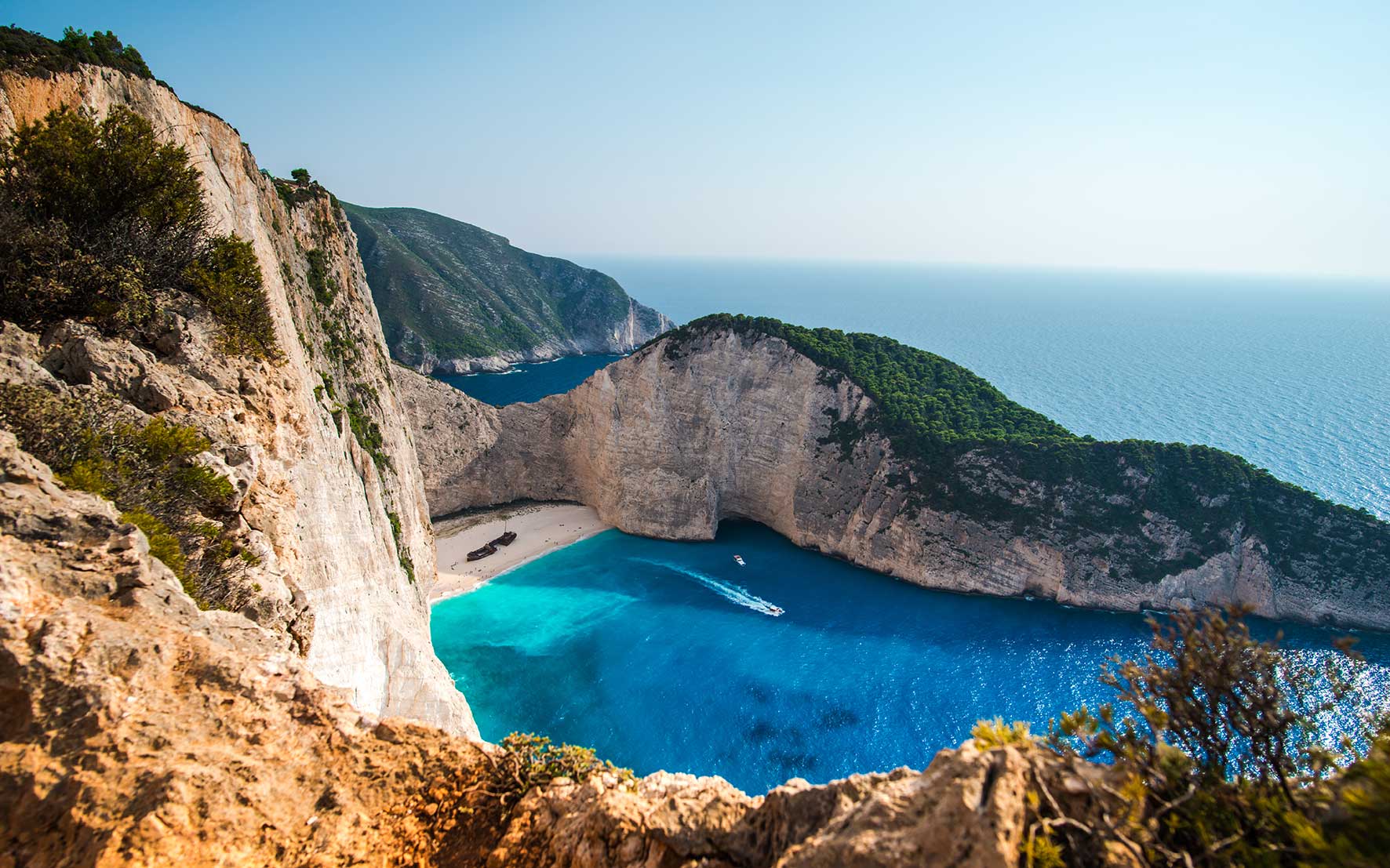
© Shutterstock
Specifically for the iconic Shipwreck Beach on Zakynthos, which has been closed to visitors since September 2022, scientists “scanned” the slopes from both the air and the ground. “Our results show that there are positions that have relaxed quite a bit. It is not appropriate under these circumstances to let people go out on the beach,” says Dr. Vassilakis.
“Also, at the beaches of Porto Katsiki, Kalamaki, Egremni and Gidaki, there should be some restrictions on access at certain points,” he added.
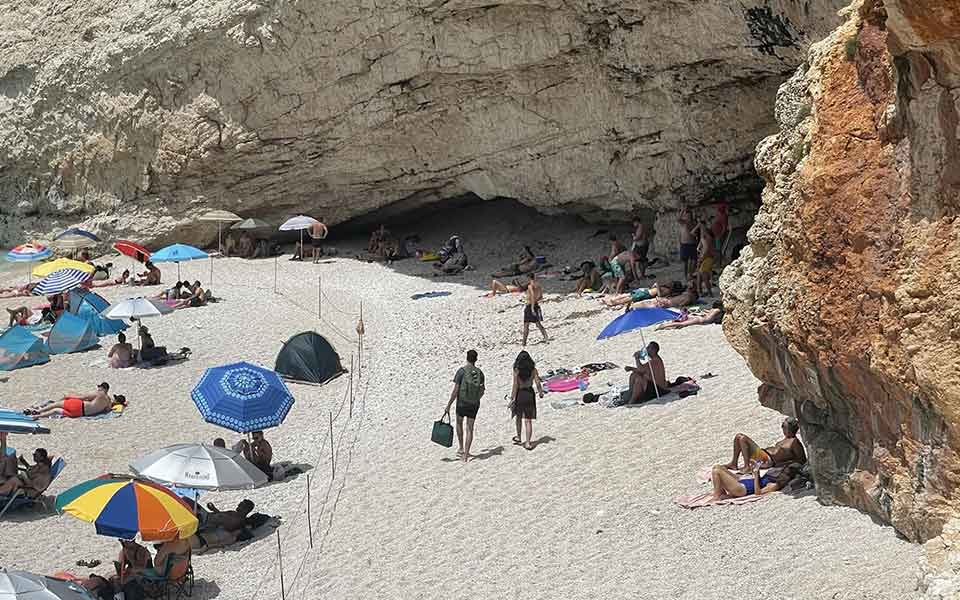
© Shutterstock
Dr. Vassilakis believes that special attention should be paid to informing visitors. “People are not abiding by the measures. Even on beaches where there is a protective fence, they jump over it and sit under the steep slopes to have shade, underestimating the risk. In Porto Katsiki we found people sitting next to stones that had fallen just a week earlier. The same in Kalamaki, where huge rocks fell on the shore and people went among them for a swim. So we need to provide a better level of information, not just a billboard that many people ignore.”
Within the framework of the research program, apart from the coasts, all the caves of the Ionian Sea were also studied, especially the caves of Melissani and Drogarati on Kefalonia, due to their high traffic. “All caves are safe,” Vasilakis explains. “The three-dimensional model for Melissani Cave showed us that, above the inner lake, the thickness of the roof is very small. This means that in the event of a strong earthquake it can collapse and the roof could open. In general, I believe that the monitoring of caves should be repeated, especially after large earthquakes, in order to record the micromovements of stalactites and identify the most unsafe places for falls. In order to locate them, we need to capture them over time.”
Also, Dr. Vassilakis believes that a sustainable management protocol should be drawn up for the caves that can be visited. “We need to protect them from the effects of high visitor traffic so that we can continue to have them in the future,” he observes.
This article was previously published in Greek at kathimerini.gr.

